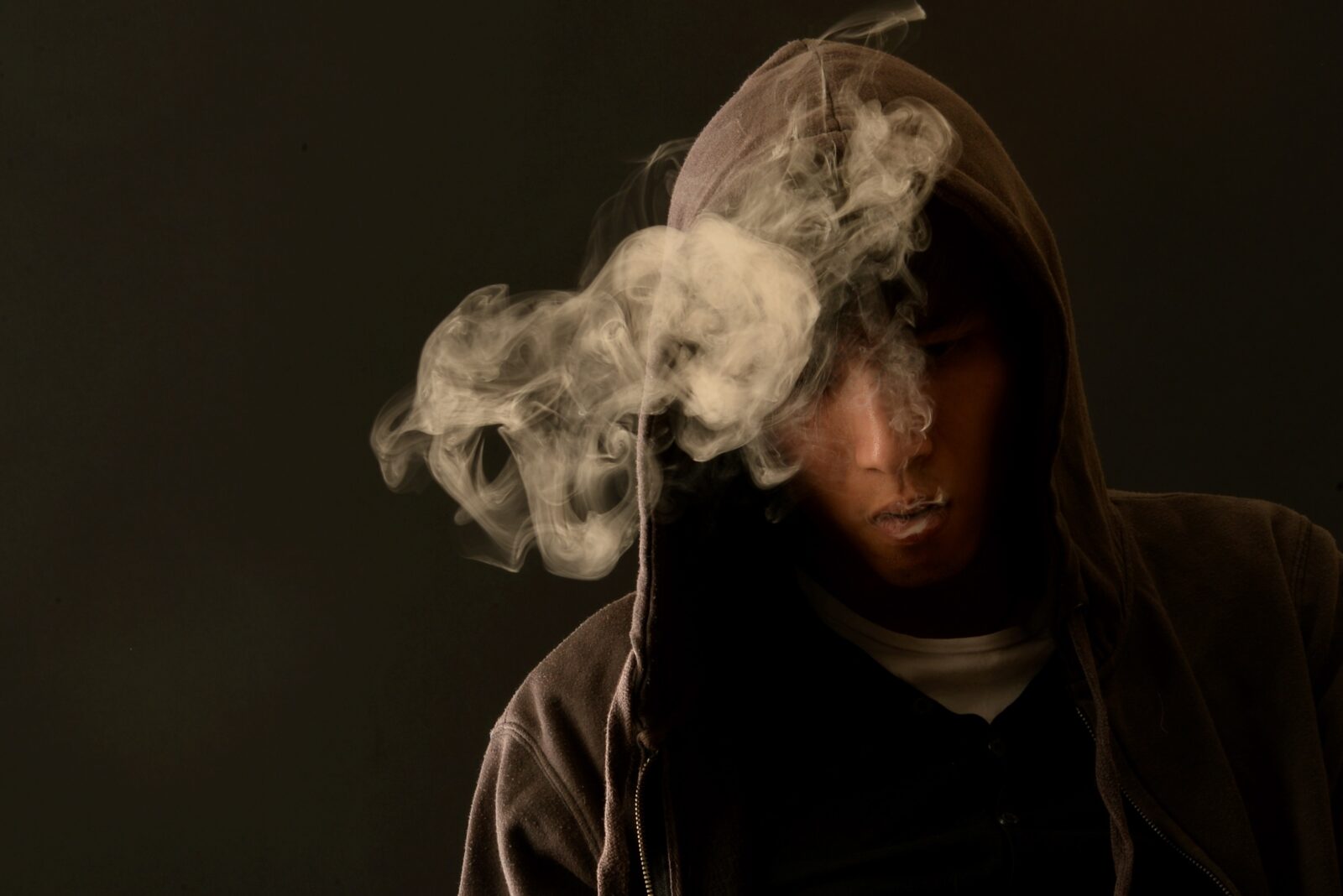HE’S not quite the Heisenberg of Malaysia just yet, but business degree student Sadhi (not his real name) is – for all intents and purposes – a drug dealer at the age of 20.
Sadhi provides marijuana to college and university students around the Klang Valley. All you need to do is call him, place your order (starting from RM50) and the weed could be delivered to you on the day itself.
And how exactly do you get his number? Easy. All we had to do was go to a university in Petaling Jaya, pose as students, and ask random people. Almost everyone said they either smoked weed, or knew others who did. By the third person we spoke to, we got Sadhi’s number.
“With the amounts he was moving, I think he would have received the death penalty if he was caught.”
But Sadhi is only a small part of a marijuana distribution system that has seen the drug become shockingly accessible to college students in Malaysia.
Most marijuana users and small-time dealers we spoke to talk about a “peer-to-peer” system, where one or two daring students – who usually start out as recreational users – buy the drug in bulk and distribute it to their college/university-mates.

“I get my stock from a supplier from outside of my campus, and I basically help others who want some by buying it for them,” he said. Despite that, Sadhi insists he isn’t a “dealer”, and claims he doesn’t make a profit from it – but that’s what they all say.
Regular user Melvin, 20, said it’s the same with his marijuana source. “It’s all about friendship and sharing; it’s just the culture in colleges now. We all buy weed and get together to smoke up. The guy I buy it from doesn’t make a profit either,” he claimed.
Deadly trip
But Melvin admits there are many college dealers who do make a profit, including a friend of his who paid for “half his university fees in the United States” by selling weed. “With the amounts he was moving, I think he would have received the death penalty if he was caught.”
He would probably be correct. Kuala Lumpur narcotics chief ACP Wan Abdullah Ishak told R.AGE having just 200g of marijuana is considered possession with intent to distribute, which carries a mandatory death sentence according to Section 39B of the Malaysian Dangerous Drug Act 1952.
Most major colleges and universities in Malaysia these days will have at least one student dealer. And that’s all you need. Other students will buy and distribute it among themselves.
In fact, as long as you are somehow involved in helping to move that 200g – or if you even so much as offer to help – you can be punished under Section 39B. Still, with this peer-to-peer “system” in place, the average college student doesn’t have to go through some scary drug dealer, so the dangers don’t seem so apparent. He or she gets it through fellow students, and together, they all perpetuate this culture which they believe is completely harmless.
“Most major colleges and universities in Malaysia these days will have at least one student dealer (who deals with a supplier),” added Melvin. “And that’s all you need. Other students will buy and distribute it among themselves.”
Ling, 19, another student user, agrees that the distribution of marijuana among students is a prevalent culture that is widespread within campuses.
“Even if we help our friends buy some weed from other dealers within campus, they won’t know where we get it from. It’s a thing among us users not to ask about it,” he said.
The situation is the same in Penang, where a real estate agent who recently graduated from college said the marijuana is fresher as it is closer to Thailand.
“It’s very common for college and university dealers here to have direct contact with suppliers in Thailand,” she said.
No surprise, then, that in 2013, marijuana addicts made up over 20% of the National Anti-drugs Agency’s (AADK) rehab cases in 2013 (behind only morphine – 35.81%, and heroine – 27.7%), and students made up a majority of those cases. That number becomes more alarming when you consider that addiction to marijuana is relatively rare compared to other recreational drugs.

“Many of them are under the impression that marijuana isn’t dangerous, and you can easily control your intake. It’s something we hear very often from those who seek rehabilitation with us,” said AADK deputy director general Izhar Abu Talib.
New studies have shown that prolonged and frequent exposure to tetrahydrocannabinol (THC), the active ingredient in marijuana, can mess you up big time, according to Perdana University Graduate School of Medicine associate professor Datuk Dr Andrew Mohanraj, who is also the Malaysian Mental Health Association deputy president. Dr Andrew busts some myths about marijuana here.
Nobody will see it, but in your mind, you will experience paranoia; and once that sets in, (psychiatric) treatment becomes very difficult, because you won’t feel you need it.
“If you are a regular user (two to three times a week) for over five years, the very structure of your brain could change, and you will develop a schizophrenia-like condition. Terms for it include ‘marijuana madness’, which is now quite accepted in the medical community.
“But if you are a long-term user, like up to ten years, then there’s no doubt about it – your brain’s structure will change, and you will experience psychosis – hallucinations, paranoia, delusions, and so on,” said Andrew.
And the worst part? Most users won’t even realise it’s happening to them.
“The excessive dopamine release (from marijuana usage) alters your personality. Nobody will see it, but in your mind, you will experience paranoia; and once that sets in, (psychiatric) treatment becomes very difficult, because you won’t feel you need it.
“You will become withdrawn and suspicious of people around you, and your career and inter-personal relationships will suffer as a result,” said Andrew.
‘Home delivery’
One of the most common arguments we heard from the young marijuana users we spoke to is that it’s being legalised in certain states in the United States – so it must be pretty safe!
“Weed has little to no side effects. It’s even less addictive and less harmful than other substances than, say, alcohol,” Ling claimed.
He wasn’t the only college marijuana user who believes that – and that’s something Andrew hopes to change. “Marijuana legalisation overseas is not all for recreational use!” retorted Andrew.
“It’s mostly for medicinal use, to help patients with severe, debilitating pain. It can also help prevent seizures for those with epilepsy. We can’t deny its medicinal properties, but abusing it for recreational purpose can be dangerous.”

Andrew said this misconception over the legalisation debate is probably the main cause of the increase in marijuana abuse among young people in Malaysia.
“I had never treated school students for marijuana-related problems before this. But now, most of them are school students. I’ve been really shocked at how easily available it is today. Some of my patients told me there are even home delivery services!”
Stopping the drugs from coming into the country in the first place has proven nearly impossible.
“Marijuana is often brought in on small fishing boats through remote mangrove forests, so tracking them down is very difficult,” said KL narcotics chief ACP Wan Abdullah Ishak. He added that most of the marijuana being sold in Malaysia is brought in from Thailand, through the northern border states, and Indonesia, via Johor.
Once it’s in the country, that peer-to-peer system kicks in and the stock gets distributed to young people across the country fairly easily.
What’s worse is that students like Ling, who consider themselves small-time users, aren’t too afraid of their actions in meddling with the drug. He claims student users like himself believe it is a low risk affair. “These aren’t big time users or dealers we’re talking about, so they’re not too scared,” he said.
“If you have money, a place to hide (the weed), and you’re someone who has a lot of friends and contacts, you can start dealing (…) There’s a guaranteed market in colleges.
Melvin now smokes up every day, spending RM150 a month on the habit. He adds that there’s a “guaranteed market” in colleges and universities if you manage to buy in bulk from a supplier.
“If you have money, have a place to hide it – which is important because it smells very strong – and you’re someone who has a lot of friends and contacts, you can start dealing,” said Melvin. “In my university, you’ll find students openly smoking up in the parking lot.”
The only way to combat the issue, it seems, is education. Young people simply have to find out for themselves what the dangers are of abusing marijuana.
Andrew said: “Young people at that age want to explore, and have gratification and adventure. But you don’t need weed to do that! Why take something that can cause permanent damage?”







Leave a reply